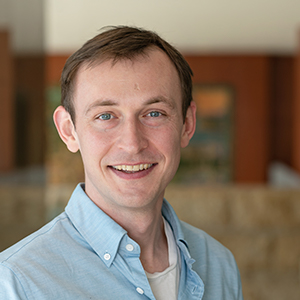In May 1975, 8.4 million people—9 percent of the labor force—were unemployed, the highest rate in 30 years. At the same time, consumer prices had risen by 30 percent in just three years. This presented the Federal Reserve with a dilemma, as most proposals to curb inflation would have further harmed the labor market.

To prompt bold action to lower unemployment, Sen. Hubert Humphrey and Rep. Augustus Hawkins introduced the Full Employment and Balanced Growth Act. The bill, championed by Coretta Scott King, was intended to ensure “the right of all adult Americans able, willing, and seeking to work to full opportunity for useful paid employment at fair rates of compensation.”
The central question was, “How?” In congressional testimony, ideas abounded. Fed Chair Arthur Burns argued that a low-wage federal job guarantee would give workers a “strong incentive to create opportunity for themselves,” and weaker environmental regulations would “improve job opportunities in this country.” Later in the day, Alan Greenspan, then chair of the Council of Economic Advisers, opposed a jobs guarantee. University of Minnesota economics professor Walter Heller argued for targeted job assistance to reach the “nooks and crannies and hollows where chronic unemployment exists.” Vernon Jordan, head of the Urban League, emphasized policies should target “those whose opportunities are already unequal because of racial discrimination.” Ultimately, the Humphrey-Hawkins Act of 1978 left open many questions about the meaning of “full opportunity” and how to achieve it.
The economic problems of the 1970s resolved, but economic challenges did not. An even worse recession hit in the early 1980s, and while productivity continued to rise, wages at the bottom of the income distribution stayed flat. The explosion of global trade and technology reshaped the economy, and now COVID-19 may have done so again. America is larger and more diverse than at any time in its history, but our economy, wrote Minneapolis Fed President Neel Kashkari in 2020, “is afflicted by glaring distributional inequalities and appears unable to provide opportunities for those in need of them.”

The Fed’s dual mandate to maintain stable prices and maximize employment is reflected in the Humphrey-Hawkins Act and codified in amendments to the Federal Reserve Act. To fulfill it in a changing world requires the best possible understanding of how economic opportunity and inclusion work in America today. That takes the collective efforts of open-minded scholars and bold policymakers, of brave citizens and revolutionary thinkers, who forge new ideas and deepen our appreciation for old ones. The Opportunity & Inclusive Growth Institute is pushing this process forward by bringing diverse researchers together. The spring issue of For All explored what inclusive growth means and how it can be achieved. Here we consider, “What is opportunity?”
Out of the gate
In 1975, Arthur Okun, the nation’s “most inventive and effective policy economist,” according to his colleagues at the Brookings Institution, grappled with opportunity. “The concept of equality of opportunity,” he wrote, “is far more elusive than that of equality of income and it defies any meaningful measurement.” He settled on an analogy. “It is rooted in the notion of a fair race where people are even at the starting line,” but, he admitted, “it is hard to find the starting line.”
One clear starting line is where we all start: in childhood. “There are all sorts of environmental factors that as a child you do not have control over,” said Dianne Haulcy, the senior vice president of family engagement at Think Small, an early childhood advocacy group in Minneapolis and St. Paul, “and they all affect your trajectory.” When environmental factors disadvantage some children at the starting line, “these are opportunity gaps.” As Lawrence Katz, the Elisabeth Allison professor of economics at Harvard University put it: “Accidents of birth should not circumscribe what you can do in life.”
Faced with widespread, large, and consequential childhood disparities, people who care for, teach, and advocate on behalf of children believe that equal opportunity means closing those gaps. “Opportunity to me,” said Haulcy, “means full access.” Sandra Newman, professor of policy studies at the Johns Hopkins Bloomberg School of Public Health, also emphasized healthy development. Opportunity “is seeding the ground for them to have a choice.”
But there are many gaps to close and many ways to close them. Fortunately, social science is helping guide child-development policies. An emblematic example is high-quality early childhood education, which as study after study demonstrates, helps children improve their approach to school and score higher on tests, earn more as adults, and even improve social and economic outcomes of their children. These findings, however, go far beyond preschool. Nathaniel Hendren, professor of economics at Harvard University, along with Ben Sprung-Keyser summarized hundreds of studies on public programs like Medicaid, tuition subsidies, and nutritional support. When these programs targeted children, they often generated such large gains in income later in those children’s lives that they paid for themselves by saving the government millions in public benefits payments and raising new tax revenue.

“It’s not just resources though,” said Sandra Black, professor of economics at Columbia University. When children are secure in the knowledge that “someone’s out there who is going to support them,” said Kraig Gratke, executive director of Minnesota Head Start, “kids can see new possibilities for themselves and think ‘I can do that.’” Devinder Malhotra, chancellor of the Minnesota State Colleges and Universities, sees the converse when students face obstacles to persisting toward their degree, like car problems or medical emergencies. “Then they’re so far behind,” he said, “that they think, ‘I was told all along this is not for me, and this just confirms it.’” Children’s opportunity to develop confidence and resilience plays a major role in how they pursue and stick with opportunities down the line.
Opportunity in childhood appeals to both fairness, a value held for its own sake, and efficiency, a goal not to waste potential. But as a way to understand opportunity more generally, it neatly avoids a difficult question: What does one do with the opportunities afforded one in childhood? Where does adult opportunity come from?
Roadblocks and shortcuts
Probably the most common use of the word “opportunity” is to describe a chance to move up economically. Both the Employment Act of 1946 and the Humphrey-Hawkins Act use it this way, which is why the Fed’s mandate focuses on both inflation and the unemployment rate.
But the interpretation of “maximum employment” and thus “opportunities” has evolved since the 1970s. The Fed now officially recognizes that maximum employment comes largely from “factors that affect the structure and dynamics of the labor market.” A company may have a job opening, but who knows about it? Who evaluates applicants and how? What determines the salary and benefits package? How is performance judged? Adult opportunity is all about how the race is run.

Take the role of social networks in career paths. “When you’re affluent, you think you’re a genius but really you’re connected to the right people and they get you opportunities no matter what,” said Louis King, president and CEO of Summit Academy OIC, a vocational school in North Minneapolis. Can we expand opportunity by changing people’s social networks? Perhaps, but it is harder than it seems. For example, a 2021 study looked at decades of data on Harvard students from the 1920s and 1930s. Those assigned a roommate from a more elite background tended to have more elite trajectories. They were more likely to join on-campus social clubs, work in finance, and belong to country clubs after college. But this only happened if they had already attended a private high school. “Social interactions among the educational elite mediate access to top positions in the economy and society,” the authors concluded, “but may not provide a path to these positions for underrepresented groups.” As King put it, “That’s the way the game works.”
Adult opportunity also depends on who has power in the economy. When firms know that it is hard for workers to find a better job, for example, they do not have to offer them a very good one to begin with. “Friction in the labor market is frustrating to employers, but it’s scary to employees,” said Steve Grove, commissioner of the Minnesota Department of Employment and Economic Development.

But when workers have the financial security to navigate a job transition and understand what job opportunities are within reach, they can negotiate to improve their current job or quit and find a new one. Grove, who oversees policies that connect unemployed workers with jobs, sees workers gaining power today. Employers are having to become more flexible, for example, by relaxing their demands for a college degree. “We are seeing a lot more on-the-job-training,” he adds, “which you can argue is a huge step forward in opportunity for workers because you’re being paid to learn.”
Economists are also now starting to consider deeper links between unequal opportunity for some and the ability of the whole economy to generate opportunities for all. Racial discrimination, for example, restricts opportunity directly. “Pre-market” discrimination, as economists call it, systematically denies people of color opportunities to become more productive. This encompasses everything from a discriminatory medical system hurting health to exclusionary housing markets eroding educational quality to racially biased prison policy harming employment and families. “Labor market” discrimination systematically denies people of color employment opportunities compared with similarly productive White workers. There is abundant evidence that both forms of discrimination affect employment, wages, working conditions, and innovation among Black, Brown, Asian, and Indigenous Americans.
Discrimination and the economy are tightly linked, however. A discriminatory economy wastes talent and misallocates opportunity, harming everyone. Between 1960 and 2010, for example, the movement of marginalized groups like Black workers and women into new occupations accounts for up to 40 percent of the growth in per-capita output in the United States. That means that of the $30,000 increase in per-capita GDP in that 50-year period (adjusted for inflation), $12,000 came from expanded opportunity.

A strong economy also expands opportunity. “A depressed economy has always meant but one thing for the Negro worker— widespread unemployment,” said the Black union leader Willard Townsend in a 1944 speech. “If we have an economy of full employment, it will establish a framework favorable to the continuing occupational advancement of the Black worker; and to the removal of White workers’ fear of him as economic rival.” Black and Latinx workers still benefit more from a strong labor market and are hurt more by a weak one than White workers. This is one reason why the Fed now describes maximum employment as a “a broad-based and inclusive goal” characterized by a “stable economy that benefits all Americans.”
The handoff

As the benefits of expanded opportunity are becoming clearer, so is the extent to which they last. Adults who had the opportunity to succeed provide their kids with opportunities to succeed. The race, Okun might say, is a relay.
But this is not equally true for all groups and in all places in America. Raj Chetty, the William A. Ackman professor of economics at Harvard University, and his research team at Opportunity Insights are using millions of data points on economic outcomes across generations to provide powerful new evidence on where children do better or worse economically than their parents and therefore where childhood opportunity is most lacking.
The data show that the adult income of children who grew up in low-income families can vary tremendously depending on where they come from. Two adjacent areas in South Minneapolis—Windom/Diamond Lake and Kenny/Armatage—provide a stark illustration of how local these influences can be. Together, the two neighborhoods encompass less than three square miles. Rents are nearly identical, houses are zoned mostly for the same schools, and they both contain lakes, parks, shopping, and highways. Yet at age 35, low-income children from Kenny/Armatage in the 1980s earned $46,000 on average—about 60 percent more than comparable kids from Windom/Diamond Lake.

These findings themselves represent an opportunity. Other research by the Opportunity Insights team shows that when children move to a higher-opportunity neighborhood, especially when they do so earlier, they earn more as adults. Now Opportunity Insights is working with the Seattle and King County housing authorities to encourage voucher recipients to move to affordable areas with high mobility. This program has been able to more than triple the share of families who live in what they characterize as high-opportunity neighborhoods.
Reading these statistics, Katz is hopeful. The best places in America for poor children to grow up prove that “high rates of mobility and opportunity really are possible within the framework of American capitalism.” Ultimately, Chetty said, “Is every kid from a poor family going to do well? Is every kid from a rich family going to do well? No, but the question in my mind is: Are they going to have an equal shot?”
Old questions, new answers
The Humphrey-Hawkins bill passed in 1978 was significantly less specific, expensive, and controversial than the one proposed in 1974. The two legislators had envisioned a new New Deal that would make the federal government an employer of last resort to guarantee adult unemployment under 3 percent. Years of debate, however, revealed little agreement about why employment opportunities arise and for whom. The final bill recommits the federal government and the Federal Reserve to the goal of “maximum employment” without taking a stand on how it should be achieved.
This openness, however, sets the task for researchers. As evidence grows on the centrality of childhood development, research points the way toward effective and efficient ways to expand children’s opportunity. We are better equipped than ever to trace out how the structure of our economy and society shape who really has the competitive opportunities that can benefit everyone. Vast new data resources paint a picture of opportunity generation by generation, year by year, and block by block across the United States.
Opportunity will always have many definitions, and meanings will change as the country changes. The goal of the Opportunity & Inclusive Growth Institute is to bring knowledge, expertise, and the wisdom that comes from experience to push forward old questions and use the answers to expand opportunity of all Americans, for all Americans.






